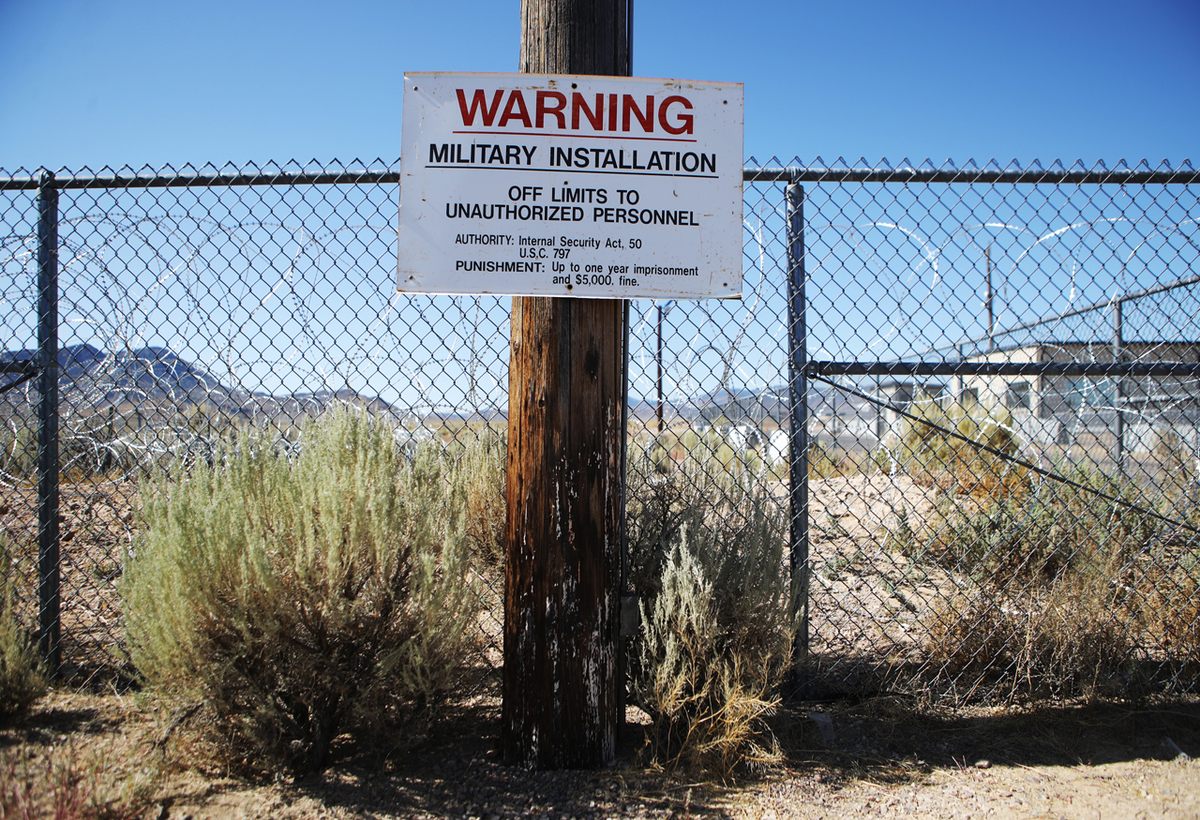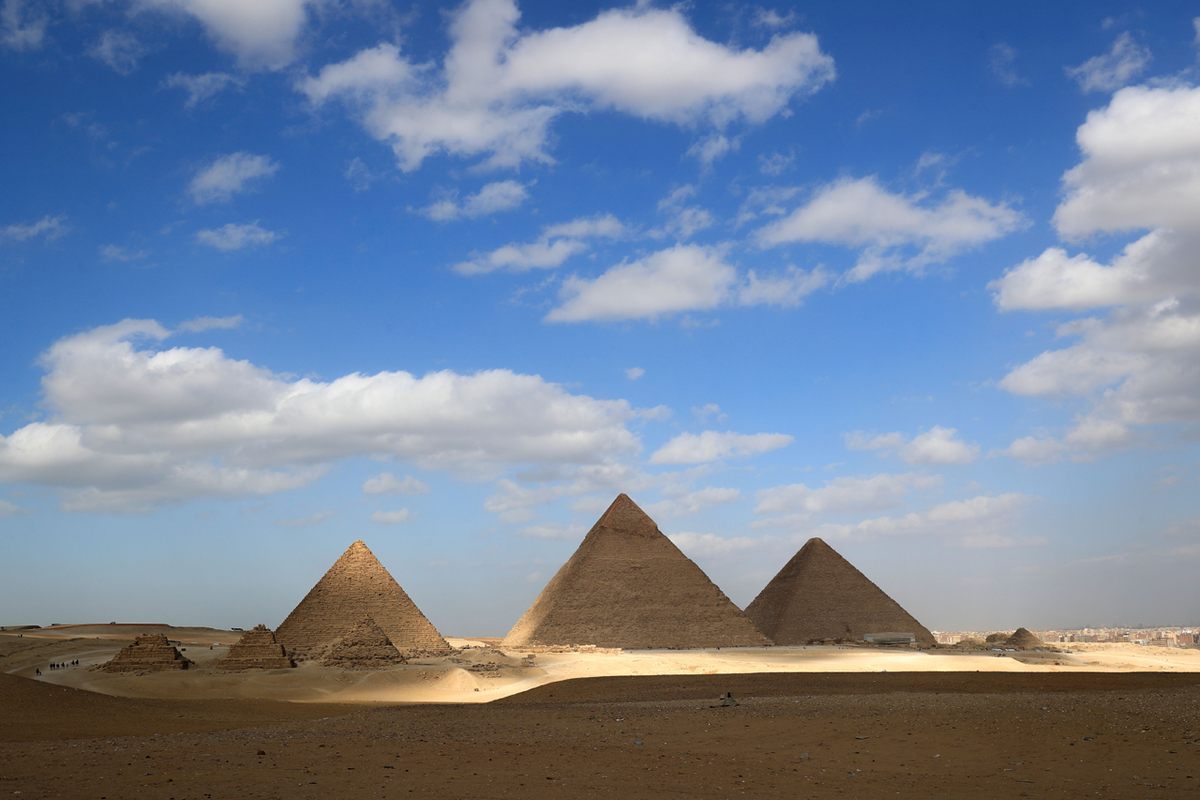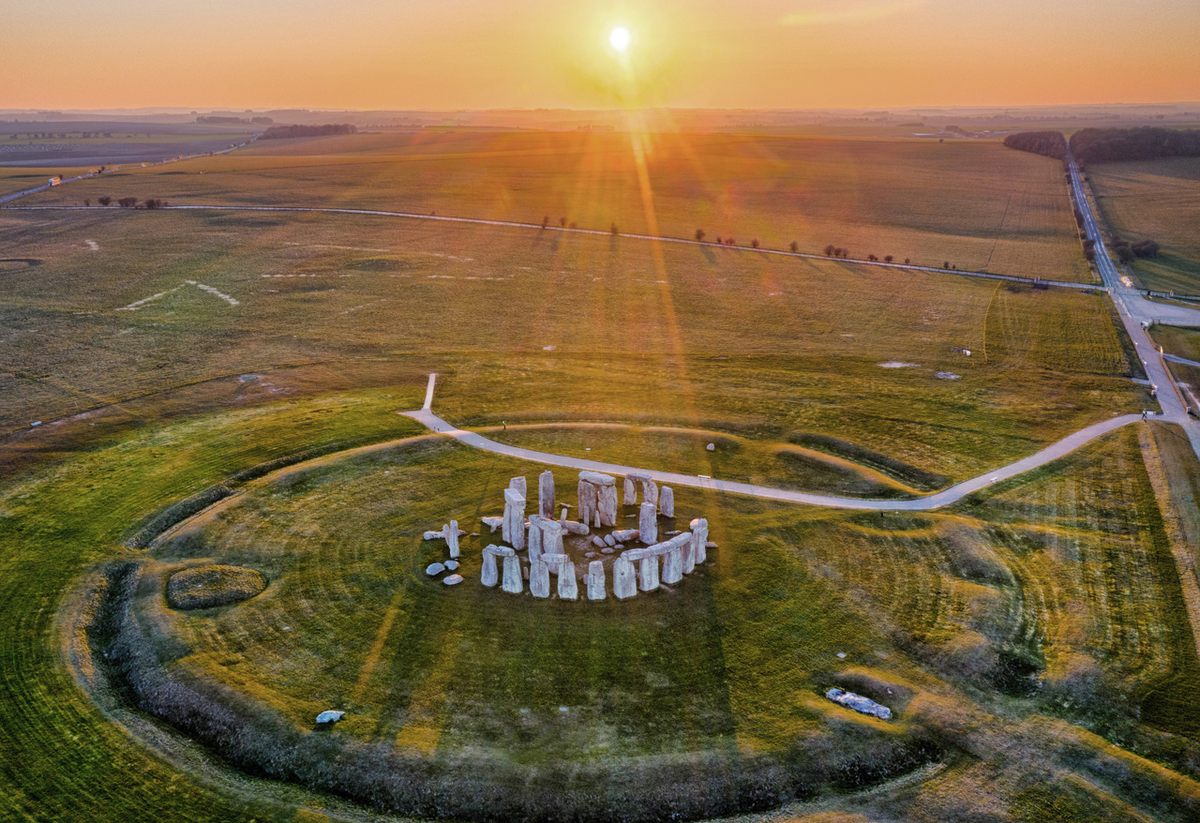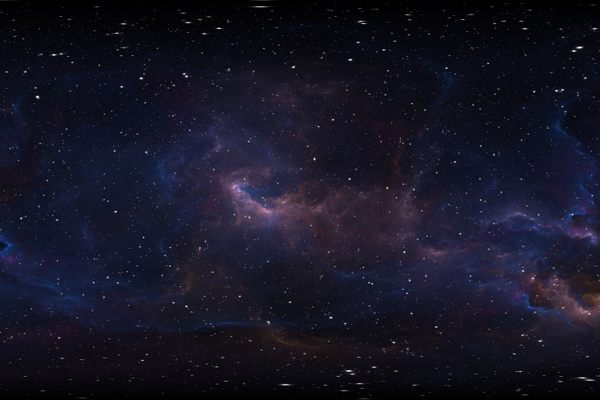
Explaining Our Obsession With the Unexplained
Fringe beliefs, conspiracy theories, and the disenchanting of the world.
This story is excerpted and adapted from Colin Dickey’s new book, The Unidentified: Mythical Monsters, Alien Encounters, and Our Obsession With the Unexplained.
June 1996, and the United States was on edge. A year after Timothy McVeigh bombed the Alfred P. Murrah Building in Oklahoma City, the country watched anxiously as a standoff between the FBI and a militia group unfolded in Jordan, Montana. The Montana Freemen had declared themselves outside the reach of U.S. law, had stopped paying taxes, and had embarked on a scheme of counterfeiting and bank fraud. When the FBI attempted to arrest them in March, they grabbed their weapons, and the Feds, eager to avoid the bloodshed that ended similar standoffs at Ruby Ridge and Waco, settled in for a siege. During the second month, news broke that another Montanan—Ted Kaczynski, the Unabomber—had been caught and charged with a series of bombings over the course of 17 years. Then, on June 14, the same day that the last of the Montana Freemen surrendered peacefully, police in Long Island, New York, arrested another group of dangerous men, revealing a plot far stranger than anything the country had yet seen.
Martin Thompson, the head of Rackets for the Suffolk County’s District Attorney’s office, had been leading an investigation into illegal gun sales when he first learned of the plan. Listening to a wiretap of two suspects, John J. Ford and Joe Mazzuchelli, he suddenly found them talking about something very different than guns.
“Once they find this stuff, on, let’s say in Tony’s car, front seat,” Ford is heard saying on the tape, only to be cut off by Mazzuchelli, who chimes in, “Nasty bastard glowing in the dark.” Ford adds, “With this isotope, he’ll start glowing in 24 hours.” Thompson and his team had stumbled on a deeply bizarre assassination plot involving stolen radium, a forest fire, and a UFO cover-up.

In addition to stockpiling a large cache of weapons, Ford was president of the Long Island branch of the Mutual UFO Network, or MUFON, a collection of UFO enthusiasts who investigated sightings to prove that extraterrestrials had visited Earth. MUFON members are not, by nature, violent: Most see their job as simply gathering evidence, as objectively and dispassionately as possible.
But Ford was not a typical UFO researcher. He claimed he had been recruited by the CIA at 18, and had routinely participated in clandestine operations against the Soviet Union. The KGB, he claimed, had tried five times to kill him, and they’d given him the nickname “the Fox,” due to his wily nature. But by the mid-1990s, things had turned: Ford injured himself on the job and his mother died, an event that, friends said, affected him deeply. And then there was the forest fire.
The blaze that swept through Long Island’s Pine Barrens in 1995 was large enough that the smoke was visible from Manhattan, some 75 miles away, ultimately scorching 7,000 acres. Over time, Ford became convinced that the fire was, in fact, caused by a UFO crash, and that the Suffolk County Board was involved in a large-scale cover‑up. He felt that the only way to get answers was to take control of the government himself, and began conspiring with Mazzuchelli and another man, Edward Zabo, to kill three county officials using stolen radium. Zabo, deeply in debt, agreed to provide the radium that Mazzuchelli would plant in the men’s homes. At a press conference the day of the arrest, Suffolk County District Attorney James M. Catterson stood before Ford’s extensive collection of weapons and explained that when he’d first heard of the plot, “the idea that someone would attempt to introduce radioactive material into someone’s food or someone’s living area at first seemed so bizarre that there’s a human tendency to discount it. It didn’t take very long to realize that this was some of our worst nightmares come true.”
The past few years, and especially the current moment, have revealed that such fringe beliefs and conspiracy theories are becoming more prevalent—and more consequential. Belief in Atlantis, or cryptids (such as Bigfoot and the Loch Ness Monster), or UFOs, or ancient aliens—has risen dramatically. For several years Chapman University in California has surveyed American’s fears and irrational beliefs. In some cases, the numbers have been steadily creeping upward: Belief in Bigfoot moved from 11 percent in 2015 to 21 percent in 2018. The belief that aliens have visited Earth during modern times went from 18 percent to 26 percent in 2016, and then to 35 percent in 2018. The notion that aliens visited Earth in the distant past has more than doubled from 20 percent in 2015 to 41 percent in 2018.
We are, in other words, experiencing a resurgence in ideas mostly dismissed by science and history. Alongside a rise in conspiracy theories about vaccines, fluoridation, chemtrails, and political conspiracies from the Illuminati to QAnon, comes more ignoring of experts and the embrace of beliefs that were once relegated to cults.
As for Ford’s little cult: Both Mazzuchelli and Zabo turned on him in exchange for lesser sentences, while Ford was pronounced unfit to stand trial and involuntarily committed to the Mid-Hudson Psychiatric Center in New Hampton, New York.
“Yes, this all sounds way out,” District Attorney Catterson said. “But when I read the Unabomber manifesto, some of his ideas were just as bizarre. That’s why I take this and the imminent threat to the individuals concerned here very seriously … This all convinces me that there is a side to humanity that defies definition.”

Murder plots are clearly an aberration in the world of UFO and cryptid enthusiasts, most of whom are normal, law-abiding folks. But there are shades of overlap between these searchers and the darker strands of conspiracy theory. They share a similar distrust of established voices—scientific, governmental, journalistic—that ranges from healthy skepticism to outright paranoia.
By themselves, fringe ideas don’t necessarily breed paranoia or violence. Much of what attracts people to them is the idea of wonder and marvel, outside the ken of humanity, just out of reach. But the toxic mélange of anti-vaxxers, school-shooting truthers, and right-wing militia groups didn’t appear overnight. As long as there has been a scientific establishment, there’s been distrust of it, and as long as there have been democratic governments, there’s been suspicion about what’s really going on. The rise in our fascination with things like cryptids and UFOs offers one vector for explaining how we got to where we are today.
Often, the genesis and evolution of these beliefs follows a standard, almost predictable, pattern. Something genuinely anomalous or difficult to explain happens, followed by increasingly elaborate explanations that resist positive or negative confirmation. The curious case of Erich von Däniken and his wildly successful “ancient alien” hypothesis offers a particularly paradigmatic example.
It begins, as often as not, with a legitimate, unsolved scientific question—in this case, the Fermi Paradox, which posited that, statistically, it stands to reason that there are other advanced civilizations in the universe. In 1950, at Los Alamos National Laboratory, the physicist Enrico Fermi, for whom the paradox was named, was discussing extraterrestrials with other scientists when he asked, “Where is everybody?”

Since then, other scientists have worked to better understand this paradox and the probabilities involved, including a young assistant professor at Harvard named Carl Sagan, who in 1963 offered a highly provisional hypothesis that perhaps “Earth was visited by an advanced extraterrestrial civilization at least once during historical times.”
Enter hotel clerk and convicted fraud Erich von Däniken. He had no formal scientific training, but he liked the idea that aliens could have visited Earth in the distant past. His 1968 book, Chariots of the Gods?, suggested that the Egyptian pyramids, the Moai statues of Easter Island, and Stonehenge in England are all artifacts of contact between humanity and aliens. An instant bestseller, Chariots of the Gods (the title long ago lost its question mark) spawned a seemingly endless series of follow-ups by von Däniken, who turned his idea into such an industry that he opened a theme park in Switzerland devoted to it.
Von Däniken’s success came in part from his ability to start with legitimate gaps in our knowledge, ignore evidence that contradicted his own claim, and then magnify the supposed ignorance of science. He argued, for example, that Egyptologists don’t know how or why the pyramids were built. In fact, there are detailed records on this from the Egyptians themselves. But this counterevidence is immaterial as the main hypothesis grows exponentially. Much of this is driven by what’s sometimes called apophenia, the tendency to see shapes and patterns where none exist—the idea that everything is, one way or another, connected.
A fringe belief system like von Däniken’s is an endless work in progress, an ever-expanding grand scheme, an associative process of connecting the dots. Stonehenge, Easter Island, the Nazca lines, Maya iconography—all are mysteries “solved” by a single thesis that encompasses all of ancient religion, art, architecture, and mythology. It is a theory seductive in its simplicity, but built on cultural chauvinism: Von Däniken and his adherents refuse to believe that ancient civilizations were intellectually sophisticated enough to have created wondrous buildings or understood complicated math and astronomy without outside help.

When archaeologists and sociologists set out to study their students’ belief in von Däniken’s ancient-astronaut theory in the late 1970s and early 80s, they found that as many as 28 percent of incoming college students believed in similar theories; more dismaying, that number stayed consistent across four years of higher education, including in archaeology.
When I talk to people who believe that Lemuria or Atlantis is real, that Bigfoot or the Loch Ness Monster exists, or that the government is covering up information about UFOs, it’s easy to hit a wall very quickly. Trying to disprove any of these beliefs—or really, any conspiracy—is frustrating and foolhardy; it soon becomes apparent that what matters is not what a person believes but that a person believes, and that that satisfaction is more important than truth or falsity.
Rather than debunking these theories, it may be more important to understand their genealogy and development. While they appear to be ancient, these ideas are (unlike, say, the belief in ghosts) a relatively new phenomenon that emerged as a result of two great, connected shocks of the 19th century: the divorce of science and religion, and the disenchanting of the world.
For most of the history of the Western world, science and religion had been linked. The study of the natural world, for ancient Greeks and medieval Christians, magnified one’s understanding of God. But the Protestant Reformation and the Enlightenment set in motion a series of events that would, by the early 19th century, set the two ideas in opposition to one another. The world of science also became professionalized and concentrated in universities, museums, and professional organizations. The powerful allure of pseudoscience is in its claim to heal this rupture and bring scientific inquiry and mysticism back into harmony.

At the same time, the world was becoming, as German philosopher Max Weber famously put it, “disenchanted.” In a 1917 article, “Science as a Vocation,” he explained that “the increasing intellectualization and rationalization” of the 19th and 20th centuries implied that we could understand anything in the natural world if we simply set our minds to it. Weber had given a name to a growing feeling in the industrialized world, that there was no more magic, nothing inexplicable or mysterious. There has been a feeling among some that this scientific disenchantment has cost us something, and that Atlantis and Bigfoot and little green men can reenchant the world.
By the 20th century, much of the world’s frontiers had evaporated, as colonialism and capitalism stretched across the globe, taking the vast “unknown” with them. But there are still those who dream of the margins, the frontiers between a disenchanted modern world and enchanted, distant places—be they sunken continents, the Yeti-infested Himalayas, or top-secret government black sites that cover up visits from beyond our planet.

















Follow us on Twitter to get the latest on the world's hidden wonders.
Like us on Facebook to get the latest on the world's hidden wonders.
Follow us on Twitter Like us on Facebook